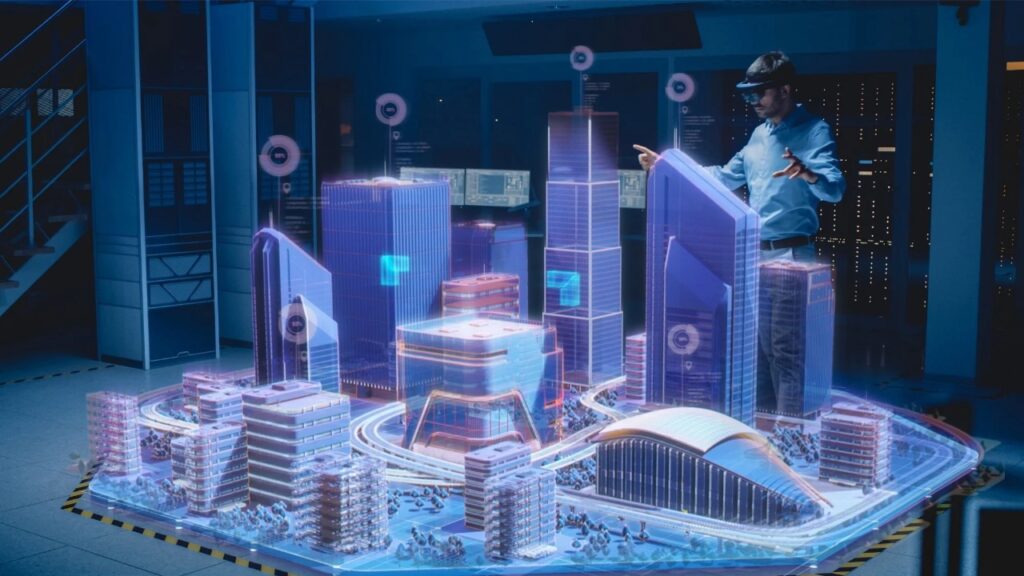In today’s fast-paced construction industry, technology plays a key role in improving efficiency and precision. One innovation that has truly transformed the way projects are designed, planned, and executed is Building Information Modeling (BIM). For leading companies like Gemcon Engineering, BIM represents a major leap forward in construction management, helping deliver smarter designs, improved coordination, and sustainable results.
What is Building Information Modeling (BIM)?
Building Information Modeling (BIM) is a digital representation of the physical and functional characteristics of a structure. It is much more than just a 3D model—it is an intelligent system that integrates design, construction, and operational data into a single platform.
Through BIM, architects, engineers, and contractors collaborate using the same digital model, ensuring real-time communication and fewer errors. At Gemcon Engineering, this technology is used to optimize workflow, enhance productivity, and ensure precision from concept to completion.
1. Improved Collaboration and Coordination
One of the most significant ways BIM revolutionizes construction is through collaboration. Traditionally, different professionals—architects, civil engineers, and contractors—worked in isolation. This often led to communication gaps and project delays.
BIM eliminates this issue by providing a shared digital workspace. Every team member works on the same model, ensuring updates are instantly visible to all stakeholders. When Gemcon Engineering integrates BIM into its projects, it enhances coordination between design, structure, and execution teams, preventing costly rework and miscommunication.
2. Enhanced Design Visualization
Visualization is the foundation of modern construction planning. Instead of relying solely on 2D drawings, BIM provides interactive 3D models that allow engineers, builders, and clients to visualize the structure before construction even begins.
At Gemcon Engineering, these 3D models help identify design flaws early in the process. Clients can explore every detail—materials, lighting, dimensions, and spatial layouts—before construction starts. This not only improves design accuracy but also ensures that the final project perfectly aligns with client expectations.
3. Cost Control and Budget Management
Construction projects often face cost overruns due to unforeseen issues or design changes. BIM helps control costs through 5D modeling, which integrates cost estimation with design and scheduling.
By using BIM, Gemcon Engineering can automatically calculate quantities, materials, and labor costs in real time. If a design change occurs, the system immediately updates the cost data. This allows for accurate budgeting, transparent communication with clients, and efficient use of resources—making every project more predictable and financially sustainable.
4. Time Efficiency and Scheduling
In the construction world, time is money. Delays can cause major financial setbacks. BIM’s 4D capabilities integrate project timelines with 3D models, creating a visual simulation of the entire construction process.
With this, Gemcon Engineering can plan each stage of a project—from site preparation to final handover—more effectively. Potential bottlenecks are identified early, schedules are optimized, and workflows are synchronized. This proactive planning ensures that projects are completed on time without compromising quality.
5. Clash Detection and Risk Reduction
In large-scale construction projects, conflicts between systems (like electrical, mechanical, and plumbing) are common and costly. BIM offers automated clash detection, identifying potential conflicts before construction begins.
Using this feature, Gemcon Engineering minimizes risks by resolving design conflicts digitally rather than on-site. This predictive approach saves both time and money while ensuring safer and more efficient construction. As a result, every project is completed with reduced risk and enhanced structural integrity.
6. Sustainability and Environmental Responsibility
As global focus shifts toward sustainability, BIM plays a crucial role in designing environmentally responsible structures. It helps architects and engineers simulate energy performance, optimize material usage, and reduce waste.
Gemcon Engineering leverages BIM to create energy-efficient, eco-friendly designs that comply with international sustainability standards. Through intelligent modeling, the company evaluates environmental impacts during the design phase, selecting materials and systems that contribute to a greener future.
7. Improved Construction Quality
Quality is the cornerstone of Gemcon Engineering’s work. BIM enhances quality control by integrating real-time data monitoring throughout the construction process. It allows for precise execution, ensuring every component is built according to specifications.
The company uses BIM to track progress, identify deviations, and maintain documentation—all of which contribute to superior construction outcomes. This meticulous attention to detail ensures durability, safety, and compliance with building regulations.
8. Facility Management and Post-Construction Benefits
The power of BIM doesn’t end once construction is complete. It provides a digital twin of the building, containing detailed information about every component—electrical systems, plumbing, materials, and maintenance schedules.
For Gemcon Engineering’s clients, this means easier facility management. Owners and facility managers can access accurate building data for repairs, renovations, or upgrades, ensuring long-term efficiency and cost savings.
9. Data-Driven Decision Making
BIM’s integration of real-time data enables data-driven decision-making. Engineers can analyze previous projects to improve designs, cost strategies, and timelines in future work.
By using these insights, Gemcon Engineering continues to refine its construction methodologies, improving performance, productivity, and client satisfaction across all projects.
10. Client Satisfaction and Transparency
Clients today expect transparency and accountability. BIM offers both. With its digital modeling and data sharing, clients can visualize progress, monitor budgets, and receive real-time updates throughout the construction journey.
Gemcon Engineering uses BIM to strengthen client relationships through open communication and transparency. This approach ensures that expectations are met—and often exceeded—while reinforcing the company’s reputation for reliability and innovation.
Conclusion: The Future of Construction is BIM
The construction industry is evolving faster than ever, and Building Information Modeling stands at the forefront of that transformation. By merging design, data, and technology, BIM provides a smarter, more efficient way to plan, execute, and maintain projects.
Gemcon Engineering continues to lead the way in Pakistan’s construction sector by adopting BIM as a core part of its operations. From reducing costs to improving sustainability and client satisfaction, BIM empowers the company to deliver excellence in every project.
If you’re looking for a modern, technology-driven engineering partner, visit Gemcon Engineering to explore how innovation and expertise can bring your construction vision to life.

